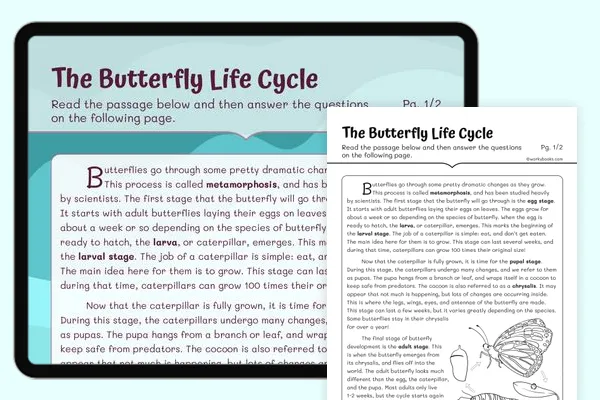Understanding Biological Evolution and Diversity — Reading Comprehension
Grades
- 3
- 4
- 5
- 6
Standards
- RI.3.3
- RI.4.3
- RI.5.3
- 3-LS4-2
PRINT+DIGITAL RESOURCE
This learning resource is available in interactive and printable formats. The interactive worksheet can be played online and assigned to students. The Printable PDF version can be downloaded and printed for completion by hand.
About This Reader
This passage addresses the NGSS standard 3-LS4-2 focusing on biological evolution and the unity and diversity of life. The content explains how evolution occurs over millions of years as organisms adapt to their environments. It discusses extinct species like dinosaurs and woolly mammoths, and explains how scientists use fossils to understand changes in organisms over time. The passage provides concrete examples such as horse evolution from small multi-toed ancestors to larger hooved animals in response to changing environments like expanding grasslands. Students will learn about the connections between modern organisms and their ancestors, understanding both the unity (shared ancestry) and diversity (different adaptations) that characterize life on Earth. The material is presented at an appropriate reading level for upper elementary students with clear examples that help visualize abstract evolutionary concepts. The passage supports learning objectives related to understanding that some animals that once lived on Earth are no longer found anywhere and that fossils provide evidence about organisms and environments from long ago.
Perfect For:
👩🏫 Teachers
- • Reading comprehension practice
- • Auto-graded assessments
- • Literacy skill development
👨👩👧👦 Parents
- • Reading practice at home
- • Comprehension improvement
- • Educational reading time
🏠 Homeschoolers
- • Reading curriculum support
- • Independent reading practice
- • Progress monitoring
Reading Features:
📖
Reading Passage
Engaging fiction or nonfiction text
❓
Comprehension Quiz
Auto-graded questions
📊
Instant Feedback
Immediate results and scoring
📄
Printable Version
Download for offline reading
🔊
Read Aloud
Voice-over with word highlighting





















